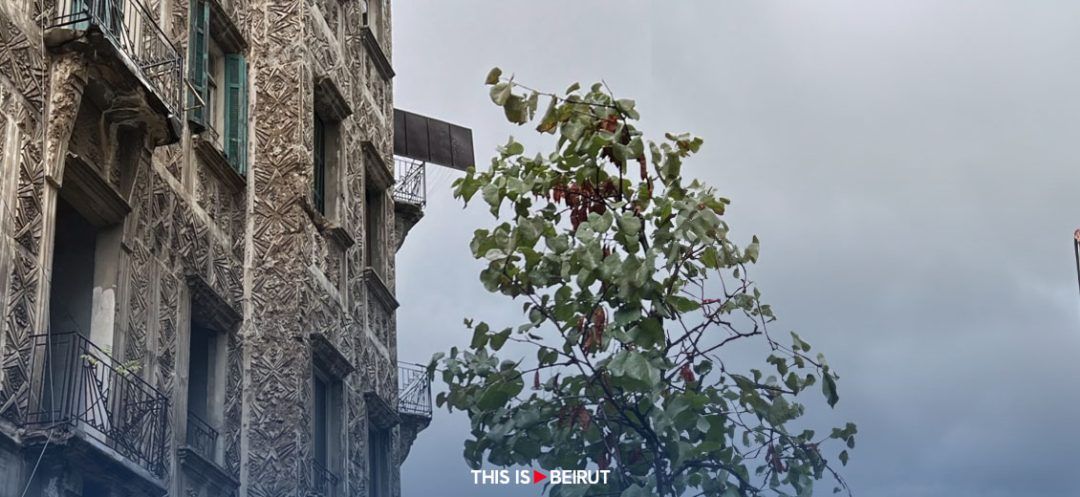
In the city of Beirut, Art Deco successfully integrated into urban life through the traditional trifora model, but also a second model influenced by the Zigzag Moderne trend. The latter is equally conservative in its volumetrics, scale, proportions and adherence to street alignment. It emphasizes its main facade, heavily ornamented with geometric, floral and zigzag motifs.
Art Deco supplanted Art Nouveau after the end of World War I. It aims to be more modern in its industrial aesthetics and minimalism. It seeks to sweep away the carefree sensuality of femininity with a more severe and masculine approach, replacing the erotic with the exotic, the curve with the straight line, and the organic with the mechanical.
Minimal shapes
Pejoratively called "noodle style" in reference to its curves, Art Nouveau is discredited in favor of streamlined forms, classical craftsmanship, and restrained and rigorously framed decoration. Organic shapes are replaced by symmetry, geometrization, sobriety, clarity, purism and cubism. In contrast to the exuberance of the Belle Époque, Art Deco opposes a return to simplified and stylized classicism.
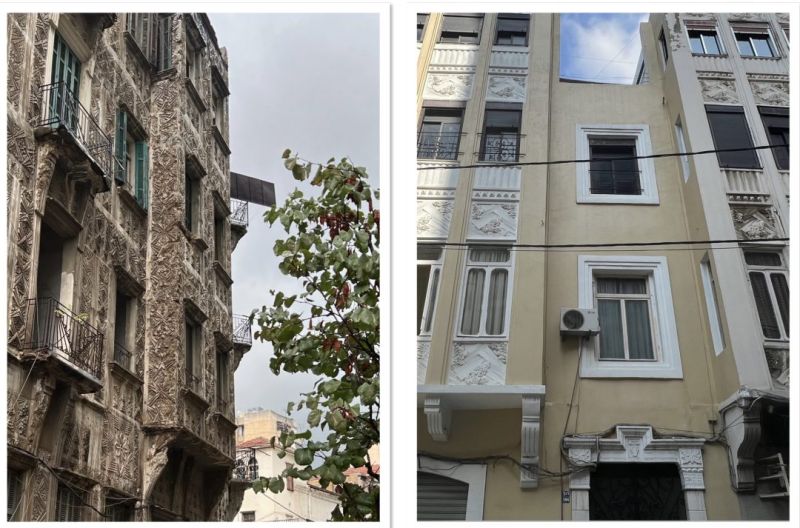 Abstract cubist decorations in the Zigzag Moderne style in Bechoura and Saint-Dimitri. Photos by Amine Jules Iskandar.
Abstract cubist decorations in the Zigzag Moderne style in Bechoura and Saint-Dimitri. Photos by Amine Jules Iskandar.Boasting the same neo-classic shapes, the Théâtre des Champs-Élysées, inaugurated in Paris a year before World War I, already anticipates the affinities and concepts of Art Deco. It embodies what the decorator André Vera called in 1912, the "qualities of clarity, order and harmony." With its vertical and horizontal lines conceptualized in the rigorous composition of the façade, the confinement of figurative decoration within cartouches, and the purity of its forms and volumes, this theater designed by Auguste Perret heralds the art and taste of the 1920s.
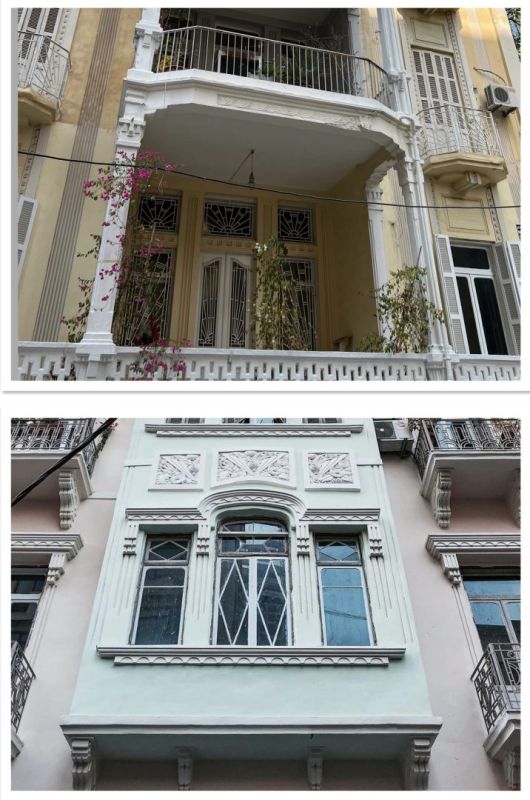 Art Deco details: bas-reliefs of the green building on Gouraud Street, and wrought iron, column capitals, and cubist balcony consoles in Achrafieh. The ground floor features three arcades redesigned as square openings. Photo by Amine Jules Iskandar.
Art Deco details: bas-reliefs of the green building on Gouraud Street, and wrought iron, column capitals, and cubist balcony consoles in Achrafieh. The ground floor features three arcades redesigned as square openings. Photo by Amine Jules Iskandar.As early as 1925, the International Exhibition of Modern Decorative and Industrial Arts held in Paris would lend its name to this new style, which would soon spread to all continents.
A new era
It is a promising new era full of discoveries. Automobiles, telephones and transatlantic navigation are developing. Intercontinental aviation takes its first steps, and Hollywood cinema is scaling up.
New fields of thought are being developed and seem limitless, with Albert Einstein's theory of relativity, Sigmund Freud's hypothesis of the unconscious, and André Breton's surrealist manifestos. All of this contributes to the emergence of avant-garde movements in European arts, literature and cinema.
Art Deco found its natural place in this fertile interwar period. Heir to neoclassicism and a branch of Art Nouveau known as the Vienna Secession (1898-1910), it is permeable to Walter Gropius's Bauhaus, Le Corbusier's more austere international style, Picasso's cubism, futurism (1910-1920), surrealism, and its contemporary world of shipyards.
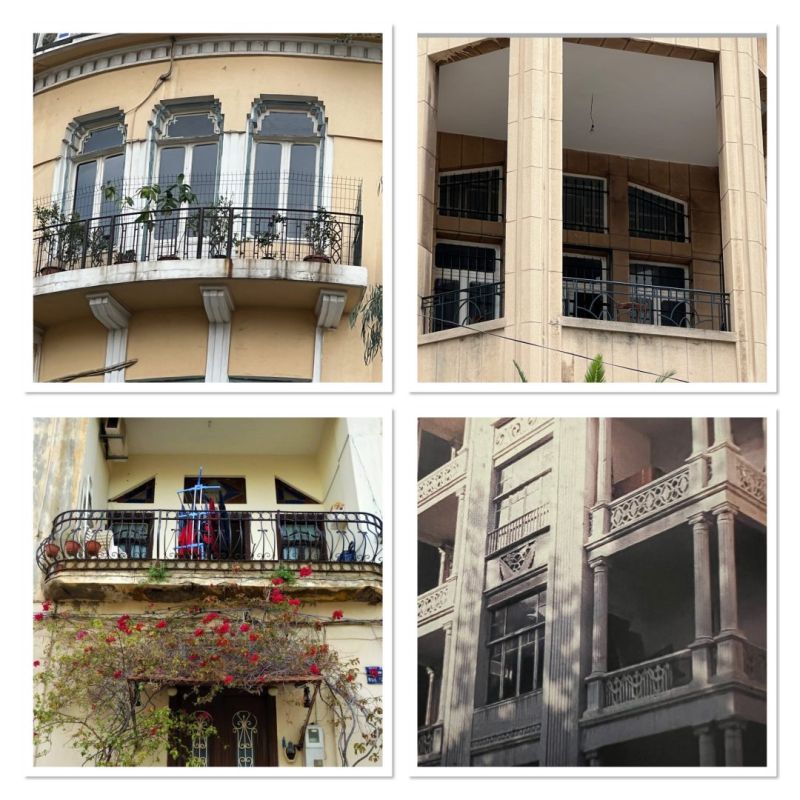 Cornice and Aztec-style triforium on Doumani Street. Trifora redesigned in trapezoid and triangle shapes on Trabaud Street (photos by Amine Jules Iskandar) and in Geitéwé (photo by Beirut Heritage Society). Trifora reduced to a square bay on John Kennedy Street (photo by Amine Jules Iskandar).
Cornice and Aztec-style triforium on Doumani Street. Trifora redesigned in trapezoid and triangle shapes on Trabaud Street (photos by Amine Jules Iskandar) and in Geitéwé (photo by Beirut Heritage Society). Trifora reduced to a square bay on John Kennedy Street (photo by Amine Jules Iskandar).In Lebanon
Art Deco flourished in Europe during the 1920s and 1930s, while in Lebanon, it still shared the artistic space with the late and timid arrival of Art Nouveau. Soon, it was Art Deco that would prevail, embracing architecture and interiors, contaminating the modern and the traditional.
Internationally, three major trends characterized Art Deco architecture: that of public or state buildings, called in America PWA/WPA Modern, the ship-like style known as Streamline Moderne, and the ornate model known as Zigzag Moderne. Lebanon added a fourth trend strongly linked to its traditional architecture.
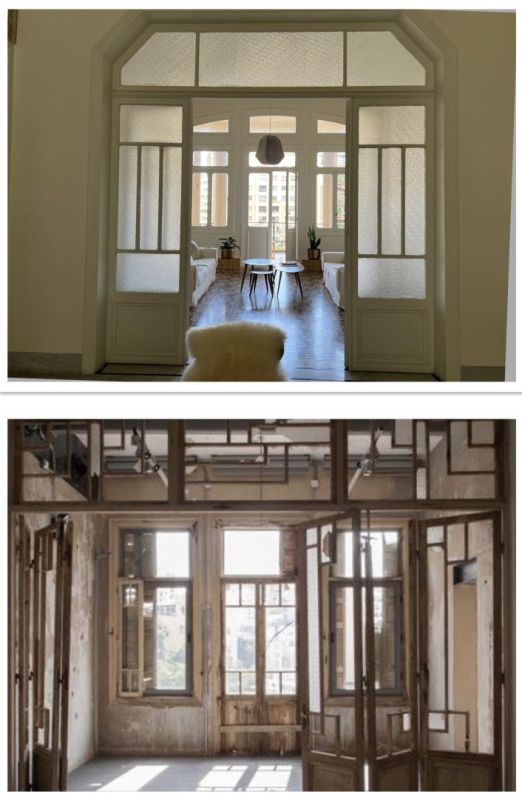 Art Deco interiors with trifora: a square example with cut corners, an example of an arch divided into three subdivisions (Albert Trabaud Street, photo by Amine Jules Iskandar), and an example with three square windows (Beit Beirut, photo by Beit Beirut).
Art Deco interiors with trifora: a square example with cut corners, an example of an arch divided into three subdivisions (Albert Trabaud Street, photo by Amine Jules Iskandar), and an example with three square windows (Beit Beirut, photo by Beit Beirut).The traditional model
The traditional model follows the Lebanese plan with a central hall illuminated by its trifora. This was revised according to the tastes of the time. Under the influence of Art Nouveau, the three arches gave way to a continuous arcade subdivided into three parts. With the Art Deco style, this same arcade took on cubism and decomposed into rectilinear segments. The curved sections are sometimes transformed into trapezoids. It happens that the trifora is rethought into simple square openings, or even into a single divided bay by simple joinery. In front of the trifora, the terraces supported by columns saw their traditionally Ionic capitals converted to cubist taste. The same goes for the consoles of the balconies.
Initially, Art Deco was intended for the wealthy class and addressed the elites eager for creativity and new trends, before gradually democratizing to reach the most modest circles. In Lebanon, Art Deco allowed savings in the construction of the trifora, where the concrete arcade replaced the three arches mounted on cylindrical columns with capitals. The new model quickly became popular and spread widely.
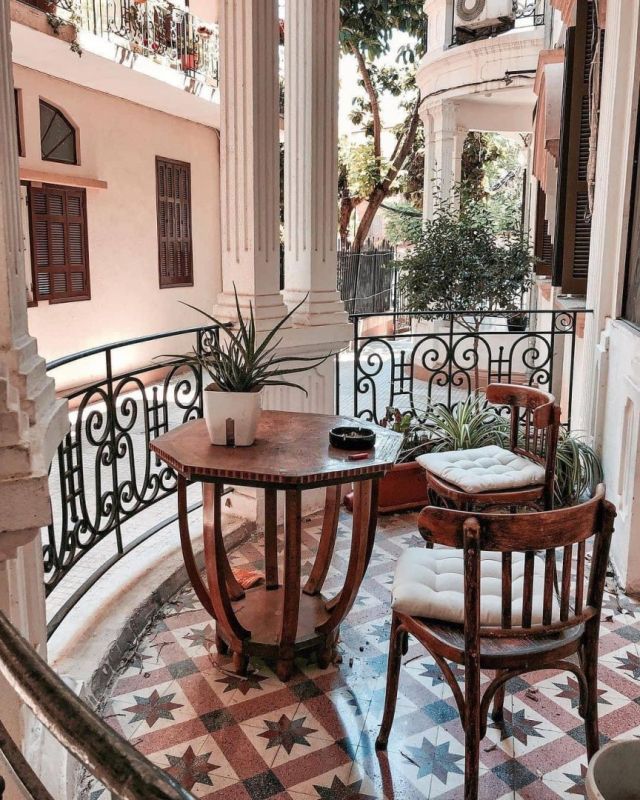 Art Deco terrace and furniture in Achrafieh, with an arcade on the left, decomposed into 3 segments. Photo found on Facebook.
Art Deco terrace and furniture in Achrafieh, with an arcade on the left, decomposed into 3 segments. Photo found on Facebook.The Zigzag Moderne
In the city of Beirut, Art Deco successfully integrated urban areas through the traditional trifora model, but also a second model influenced by the Zigzag Moderne trend. This model is just as conservative in its volumetry, scale, proportions, and alignment on the street. It favors its heavily ornamented main façade with geometric, floral, and zigzag patterns. It honors the bow window overlooking the sidewalks, vertical windows and openwork stairs, but does not necessarily incorporate a trifora. Its different elements are intensely adorned with floral and cubist bas-reliefs.
The favorite theme of Art Deco is the rose, which integrates with cubist and zigzag compositions, both in fabrics, cabinetry and molded concrete façade. These geometric bas-reliefs can be measured in that they are limited to certain well-defined cartouches like the floral decoration of the green building on Gouraud Street. But they can also invade the entire façade like the highly cubist example of Bechoura. The model on Saint-Dimitri Street is a wonderful testimony to the synthesis between the rose and the cubist geometry of the time.
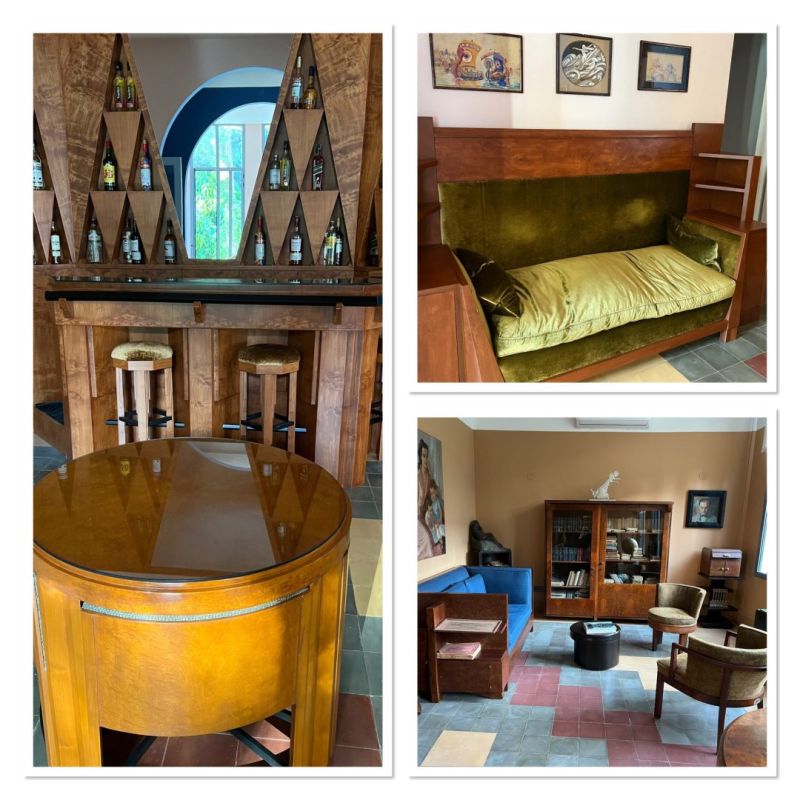 Bar, round table, and library sofas from the 1925 International Exposition of Decorative Arts at the Charles Corm Foundation, Beirut. Photo by Amine Jules Iskandar.
Bar, round table, and library sofas from the 1925 International Exposition of Decorative Arts at the Charles Corm Foundation, Beirut. Photo by Amine Jules Iskandar.Furniture
In interiors, the patterns of the fabrics of the time echoed the floral compositions, the geometric repertoire and the stylized inspirations of Egyptian, Aztec, or Mayan arts taken up by the façade decorations. Their jerky and repetitive rhythms reflected those of the music of the time.
Here and there, a club chair with deep forms faced the library sofa, surrounded by support furniture with curved façades. All this extremely careful, purified and lacquered cabinetry was highly creative and sought the effect and value of the unique piece. Some examples used marquetry with ivory, mother-of-pearl and sometimes gold inlay. Surprisingly, it is still possible to come across a Pierre Charrot, Eileen Gray, or Gaston Suisse that has escaped the ravages of war.
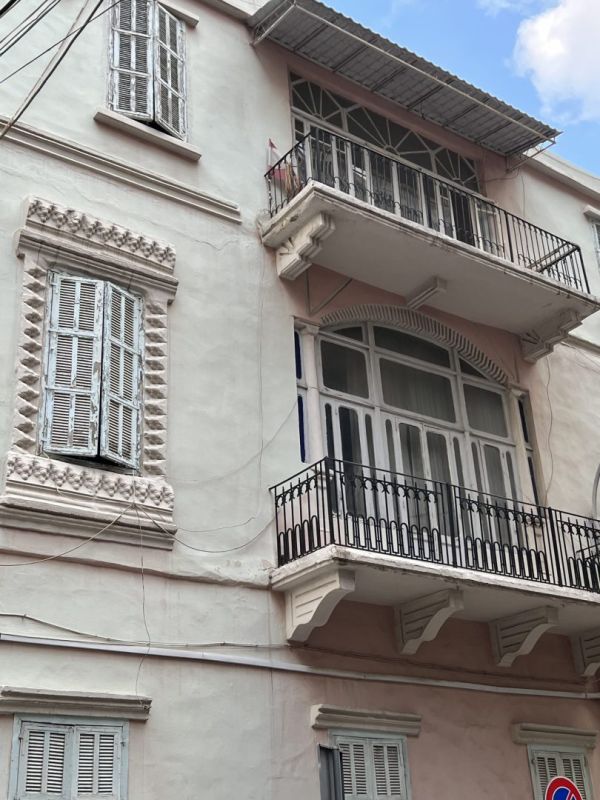 Art Deco in Achrafieh, with a single-arch trifora, and a straight trifora, both subdivided by carpentry. The windows of the first are adorned with zigzag frames. Photos by Amine Jules Iskandar.
Art Deco in Achrafieh, with a single-arch trifora, and a straight trifora, both subdivided by carpentry. The windows of the first are adorned with zigzag frames. Photos by Amine Jules Iskandar.
Read more




Comments